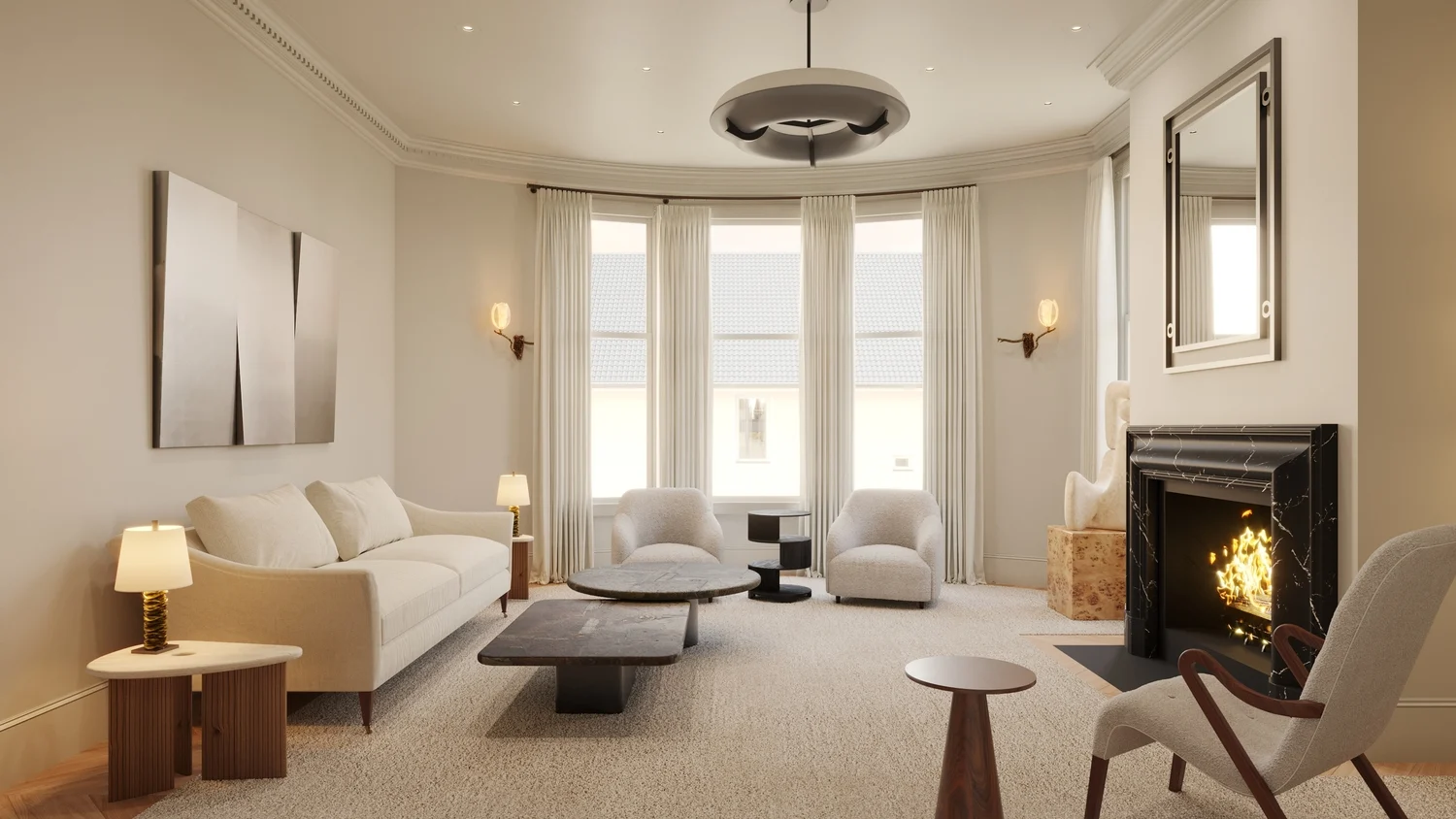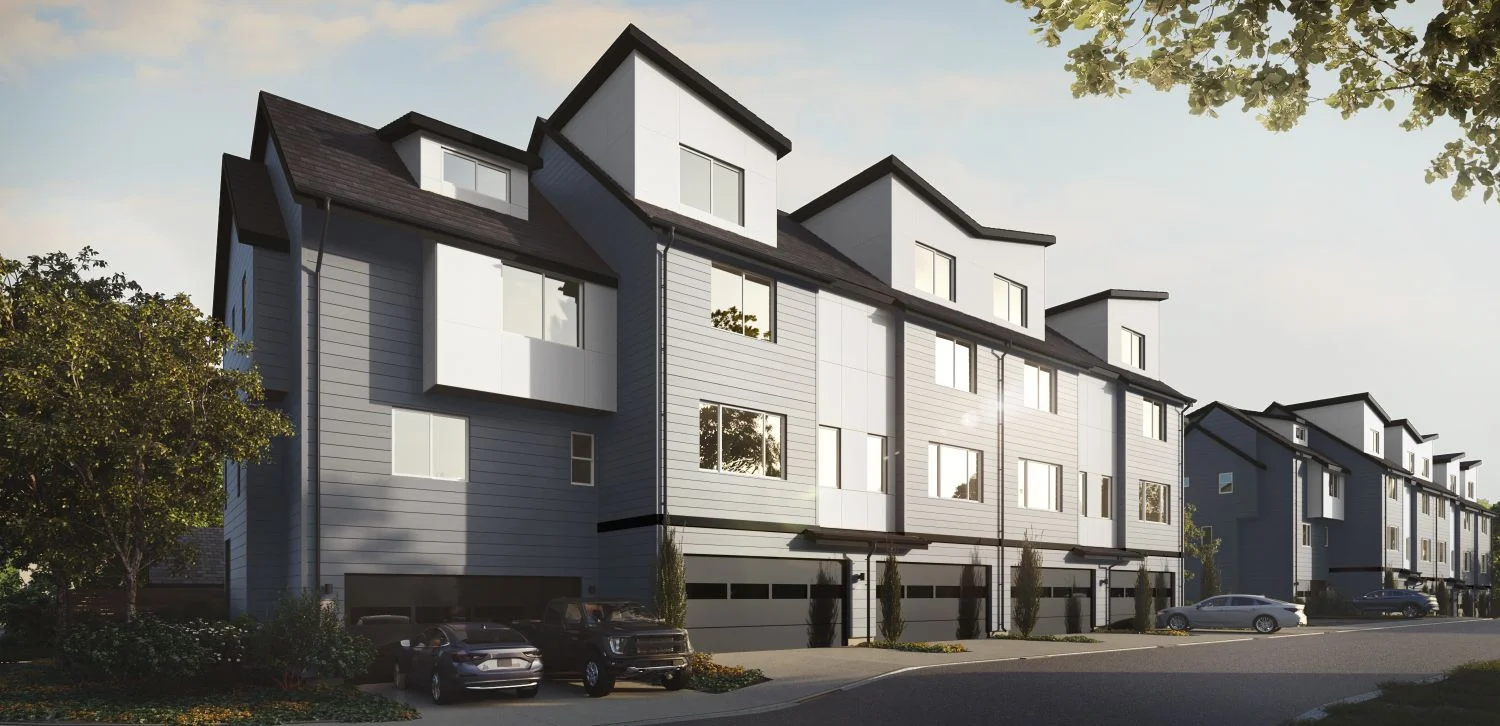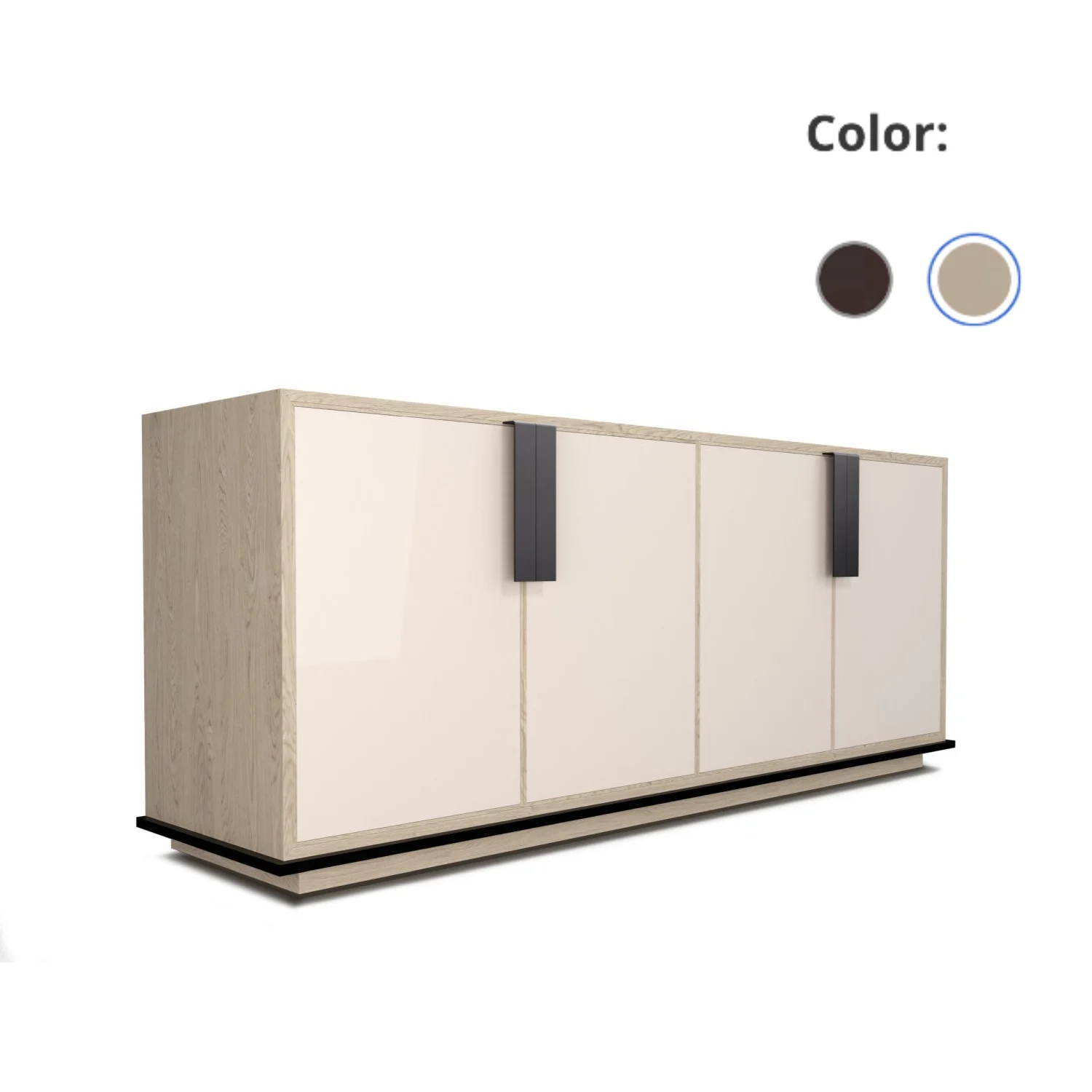Townhouse Rendering: a Complete Guide for Interior Designers, Property Managers, and Homeowners
Discover how to choose the best architecture rendering software or alternatives, such as rendering studios.

Townhouse render is a crucial tool for real estate sales today. Architects, developers, and marketers actively use them. It’s much more informative to see what the finished home will look like before it’s built.
This article explores what townhouse renderings are and their benefits and provides examples of why professionals increasingly rely on high-quality 3D rendering services.
What Is Townhouse Rendering?
3D rendering of a townhouse creates lifelike 3D visualizations of townhouse interiors, exteriors, and surrounding environments. Townhouses balance private and communal spaces. This advantage distinguishes them from detached single-family homes and apartments.
3D visuals showcase architectural features such as façades and landscaping. They also capture interiors — living rooms, bedrooms, and kitchens—providing a realistic sense of space and adding depth to any presentation or online listing.
Designers can highlight the design concept by rendering a townhouse before construction begins. The developers will test the finishes and attract investors at an early stage.
Thus, townhome visualization is becoming an indispensable marketing and planning tool.
Benefits of Townhouse Renders
In real estate and architecture, visuals bridge ideas and reality. Townhouse renders have become a powerful tool. It benefits architects, developers, real estate agents, and homeowners.
These visualizations deliver measurable business benefits. They provide a clear return on investment (ROI). They also influence decision-making and more effective marketing. And besides, they are stunningly beautiful.
For Architects & Designers
Traditional blueprints and 2D drawings often leave room for interpretation.
Townhouse render solves this by creating lifelike visuals. They confirm proportions, layout, and material choices before construction begins. This clarity helps clients understand complex designs. Visualization reduces the amount of communication and costly rework later on.
Faster approvals mean projects move forward without delays. Thus, 3D visualization of a townhome leads to time savings and increased trust between architects and clients.
For Developers & Real Estate Agents
Developers and agents know that time is money. With a townhouse 3D render, they can market properties long before construction finishes. This allows for pre-sales, securing early revenue, and reducing financial risk.
A polished 3D townhouse renders also attracts investors. These visuals showcase not only the design but also the lifestyle associated with the project. This speeds up buy-in and shortens sales cycles. Renderings remove delays caused by weather, construction schedules, or staging. This is more cost-effective than using finished photography.
For Homeowners
Homebuyers want to feel confident in their investment. Townhouse interior rendering lets them visualize spaces in detail. The visuals stunningly showcase open-plan living areas and private terraces. More importantly, they can preview interior design, customized finishes like flooring, paint colors, or cabinetry.
This personalization deepens the emotional connection to the property. Buyers who “see” their home before it’s built are likely to commit.

Cost and Time Savings
Physical models and staged photography are expensive, inflexible, and time-consuming. 3D rendering of a townhouse provides a faster, more affordable alternative. The user can digitally change the design or layout in just a few hours.
This agility reduces production costs and allows marketing teams to launch campaigns earlier.
The result is a smoother, leaner process that maximizes ROI.
Townhouse 3D rendering delivers measurable business value at every stage of development. It accelerates decisions, strengthens marketing, and enhances confidence. This makes it an essential tool for today’s competitive real estate market.
Key benefits at a glance:
- Design validation for architects
- Pre-sales for developers
- Emotional engagement for homeowners
- Reduced costs compared to traditional models
- More precise design planning
- Faster decision-making and project approvals
- And besides, it’s also simply beautiful.

Types of Townhouse Renderings
Different types of 3d townhouse rendering serve specific purposes in real estate marketing and design.
- Exterior renderings – Show façades, landscaping, and neighborhood integration. PIXREADY’s example: 3D rendering townhouses.
- Interior renderings – Highlight living spaces, kitchens, bedrooms, and bathrooms with lifelike materials. PIXREADY's example: Country Cottage 3D Visualization.
- Aerial views—To show scale, place many townhouses in a community context. This emphasizes how townhouse rows fit within a community, giving buyers a sense of scale and layout.
- 360° tours and animations provide immersive experiences for potential buyers. Interactive projects significantly enhance presentations. They help buyers explore every detail.
Together, these options make townhome renders more persuasive and engaging.
The 3D rendering, townhouse developers, and marketers can tailor presentations to their audiences.
Traditional Photography vs. 3D Townhouse Rendering
While photography has long been a standard, it comes with significant limitations:
Photography challenges:
- Requires a completed property.
- Weather and lighting restrictions.
- Limited customization options.
Traditional photography is costly to stage, making it less flexible than a townhouse render.
Townhouse 3D render advantages:
- Available before construction finishes.
- Many design variations at low cost.
- Freedom to adjust lighting, finishes, and settings.
In short, 3D townhouse visuals provide flexibility, speed, and cost savings. Photography can’t compare, making visualization an excellent tool for real estate marketing. By the way, AI pictures compared to 3D rendering also have a number of differences.
Traditional photography and 3D rendering can be combined for hybrid marketing. You can use actual photographs of completed spaces. Include renderings for unfinished properties or renovations under development.
Cost of Townhouse Renderings
The price of townhouse rendering services depends on several factors:
- Project size and detail – Larger townhouse communities must have more images and modeling.
- Type of rendering – Still images cost less than animations or VR tours.
- Level of realism – Photorealistic townhome 3D visualization with detailed textures requires more time.
On average, 3D townhome visuals range from $300–$800 per still image, while animations can cost $2,000–$5,000 depending on length and complexity.
VR tours or 3D rendering townhouse experiences may cost more, but they add significant value to marketing.
The ROI is clear: one render can generate early buyer interest, reduce marketing expenses, and speed up sales. Visualization is a much more efficient investment compared to the cost of building physical showrooms.
Clients save money and receive more benefits thanks to a 3D rendering of a townhouse. They avoid expensive physical models and repeated photo shoots. Digital visualization allows quick changes, early marketing, and reduced construction risks.

The 3D Townhouse Renderings Process
Creating a high-quality townhouse 3D render is a step-by-step process. It combines technical expertise and creative design. Each stage must ensure the final result looks realistic, engaging, and aligned with the client’s vision. Here’s how the process works in five key steps.
Step 1: Gathering Project Data
Every project begins with collecting reference materials. Architects and developers share blueprints, CAD files, sketches, or mood boards. This information forms the foundation of the visualization process. The more detailed the data, the more accurate and efficient the rendering. At this stage, the goal is to understand the client’s vision and define project goals.
Step 2: 3D Modeling of the Structure
Once the references are ready, artists create a 3D model of the townhouse. This digital version represents the building’s shape, proportions, and layout. The model includes exterior elements like the façade, roof, and interiors such as living rooms, kitchens, and staircases. Precision in modeling ensures that the render accurately reflects architectural plans.
Step 3: Texturing and Material Application
After modeling, developers install the design using textures and materials. They apply surfaces such as brick, wood, stone, or glass to the model. This step adds depth and realism, showing how materials look under different conditions. Developers select floor coverings, wall finishes, and furniture textures per the design concept. The aim is to capture both function and atmosphere.
Step 4: Lighting Setup
Lighting dramatically changes the mood of a render. Artists set up natural lighting and artificial lighting depending on the scene. A sunny outdoor view highlights landscaping and exterior details. Interior lighting emphasizes warmth and comfort. Light balancing brightness, contrast, and reflection makes the render look photorealistic.
Step 5: Rendering and Post-Production
Finally, the scene is processed into high-resolution images. In post-processing, details are added to enhance realism. For example, greenery, people, cars, and the background sky. This step ensures that the townhouse doesn’t look like a digital model but is part of a living environment. Adjustments in color correction, sharpness, and atmosphere complete the presentation.
Through these five steps, 3d townhouse renders transform raw data into visuals. They inspire buyers, support architects, and help developers effectively market their projects.

Why Choose PIXREADY for 3D Townhouse Rendering
PIXREADY is a trusted partner for developers, architects, and marketers for townhouse renderings.
Our team delivers photorealistic interior and exterior visualizations that capture every detail with accuracy and creativity.
With a proven track record across industries—from real estate and interior design to retail projects—we know how to tailor visuals that resonate with clients and investors alike.
PIXREADY also offers speed and scalability. Whether you need a single townhouse render or a complete set of marketing materials for a large residential community, we can deliver on time without compromising quality.
Our services include a wide range of customizable options, from static renders to immersive animations and 360° virtual tours, ensuring you have the right tools for every stage of sales and promotion.
With PIXREADY, you get more than visuals—you get a competitive advantage.
PIXREADY partnered with a forward-thinking real estate development company to create 3D townhouse renderings for a project still under construction. The developer needed striking visuals to showcase sleek architecture and thoughtful design, helping potential buyers and investors picture the finished homes.
Our team produced lifelike images with natural lighting, landscaping, and surrounding context, offering an immersive preview of the residences. These renderings replaced costly mock-ups, streamlined early marketing, and accelerated project approvals.
By presenting a clear, photorealistic vision, PIXREADY helped attract early interest, secure pre-sales, and reduce financial risk, proving the value of 3D architectural visualization in real estate marketing.
Conclusion
Townhouse render is revolutionizing how developers, designers, and marketers present properties. It saves time, cuts costs, and creates visuals that inspire buyers before construction begins. A modern project presentation looks incomplete without visualization.
By partnering with experts like PIXREADY, stakeholders can access premium-quality visuals that transform marketing and sales strategies. The future of real estate marketing is already here, and townhouse visualization is an integral part of this reality.
.png)
Founded by a group of technology, architecture, and design professionals in 2018, PIXREADY is one of the challengers empowering the 3D visualization industry and making its products and services more affordable.We are determined to assist businesses around the world to create photorealistic images of their products and ideas and enrich the experience of their clients. We focus on the details, with the highest precision in every pixel.
Latest Posts
STAY UPDATED
Get occasional emails with 3D visualization news and insights
%20%D0%BA%D0%BE%D0%BF%D1%96%D1%8F.webp)

.webp)